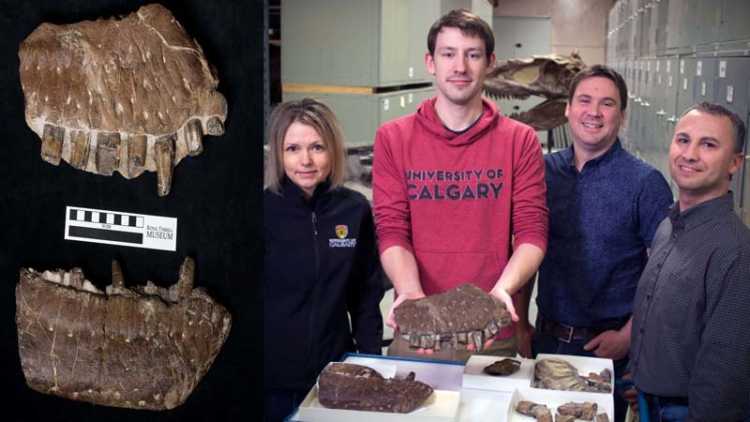A paleontology enthusiast has discovered a new species of dinosaur in Canada that lived 80 million years ago and is closely related to the Tyrannosaurus rex.
Called the ‘Reaper of Death’, this creature would have grown up to 30 feet long and weighed about two tons – compared to the T. rex that was about 39 feet long and weighed up to nine tons.
What led experts to conclude the relationship was the new dinosaur’s skull, which suggests it had a high tooth count and long, deep snout – both of which are characteristics of the Tyrannosaurus rex.
The new specie’s scientific name is Thanatotheristes Degrootorum, which is inspired by two Greek gods – Thanatos (Greek god of death) and theristes (one who reaps or harvests).
John De Groot, a farmer and paleontology enthusiast, found the fossilized skull fragments while hiking near the hamlet of Hays in southern Alberta in 2010
The discovery is one of the oldest known tyrannosaurs from North America. It’s the fifth tyrannosaur species to be discovered in Canada, and the first one in 50 years.
‘The jawbone was an absolutely stunning find,’ said De Groot in a statement released Monday.
‘We knew it was special because you could clearly see the fossilized teeth.’
This specimen is the oldest tyrannosaur from Canada and is roughly 79 million years old making it 12 million years older than Tyrannosaurus rex.
University of Calgary PhD student Jared Voris said: ‘It’s older than T-Rex but it seems like this was North America’s T-Rex at the time.’
‘It was a species that was distinct from T-Rex and it wasn’t until several million years later that T-Rex came to North America, probably from Asia, and invaded and replaced all the tyrannosaurs that we see in North America from that time range.’
Thanatotheristes provides scientists with insights into the tyrannosaur family tree and shows that tyrannosaurs from the cretaceous of Alberta were more diverse than previously known.
Francois Therrien, curator of dinosaur paleoecology at the Royal Tyrrell Museum of Palaeontology, said: ‘There’s very few places in the world where you can brag that you have five different species of tyrannosaurs.’
‘Most places — like in the States — if you have one, two, maybe three tyrannosaurs you’re very lucky. Here in Alberta we already have five.’

